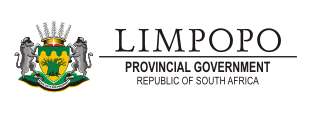
Statistician General Risenga Maluleke hands over Limpopo census report
The fourth census report since the dawn of democracy in 1994 has been released. Recent report has caused the Statistic South Africa 4 billion to get accurate data. Today, the Statistician General Mr Risenga Maluleke handed over the Limpopo Province breakdown report to paint a picture of progress made in 1996 since the first census after democracy.
Giving the breakdown to the Premier, Mr Maluleke has given a background on why there is a need to conduct census in every 10 years.
“We need this data to measure performance and allocate budget informed by the data that has been complied and evaluated by international independent expect bodies, that confirmed that, this data is solid and usable for planning” said Maluleke
The fourth census was done fully digital with information being captured instantly and sent to the central data server. Although it was not a very smooth operation with challenges, such as connectivity and being conducted during the Covid 19 pandemic era when human contact was almost impossible due to the spread of virus , 97% dwelling units were interviewed leaving out a total of 23.53% being missed for various reasons including unavailability of people in the provided address especially in the cities.
As of 2 February 2022, the province has 6.6 million people with 3.5 million being females and 6.3 million being Black Africans contributing to the total South African population of 62 million in 2022 with Black Africans remaining dominant population and decline of white population with about 11%.
The report has also revealed that the Sepedi language is the most spoken in the province by 5.5% of the population followed by Tsonga with 17.4 and Shona at the bottom with 1%.
Currently Limpopo is the biggest contributor to the Gauteng Province with the working class and 45.5 % of Zimbabweans nationals migrating to the province as their first port of entry followed by Mozambique.
Since 1996, Limpopo was at 62% of formal housing which has increased to 94%. Agriculture has also shown increase by overtaking the Western Cape with production of food not going to the market but for own consumption that improves the nutritional livelihoods and substantial farming skills.
Accepting the report on behalf of the province, Premier Stanley Chupu Mathabata said the report paints a good picture of progress made since 1994.
“What we have just listened to is good news, I was born, raised, studied and worked here and I know where we come from. This is an objective reality according to the statistics released. Housing has improved from rondavells to 94% of formal housing.
The Premier has also emphasized changing the curriculum method to align with the evolution of 4th Industrial Revolution and introducing subject that are relevant to careers such as mining and relevant skills that will retain the migration of people of Limpopo to other provinces.
By: Emmaculate Cindi
